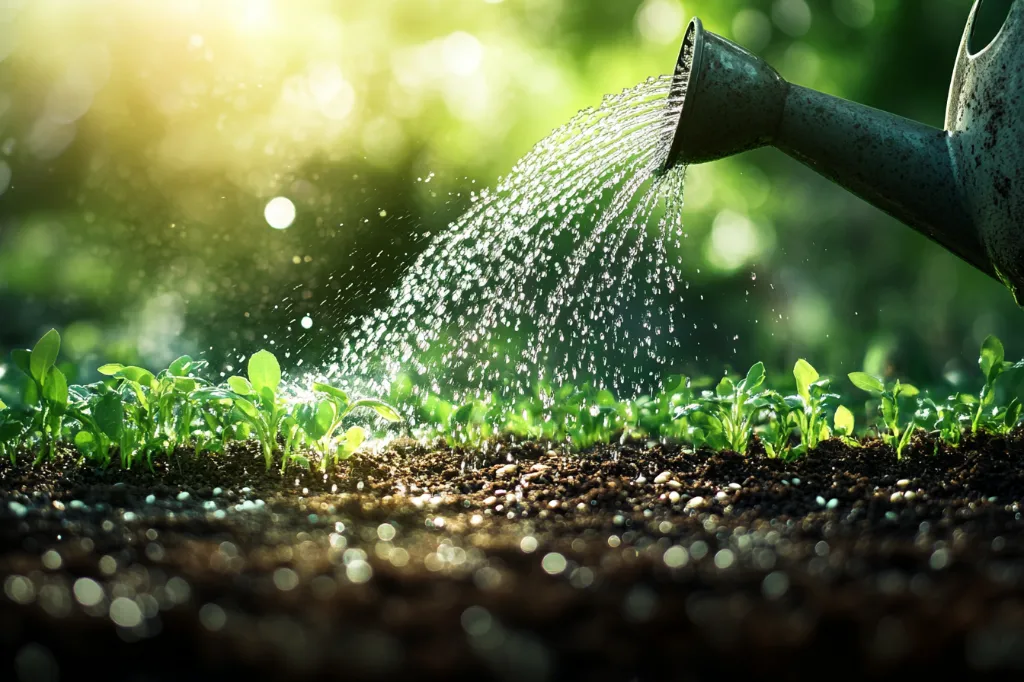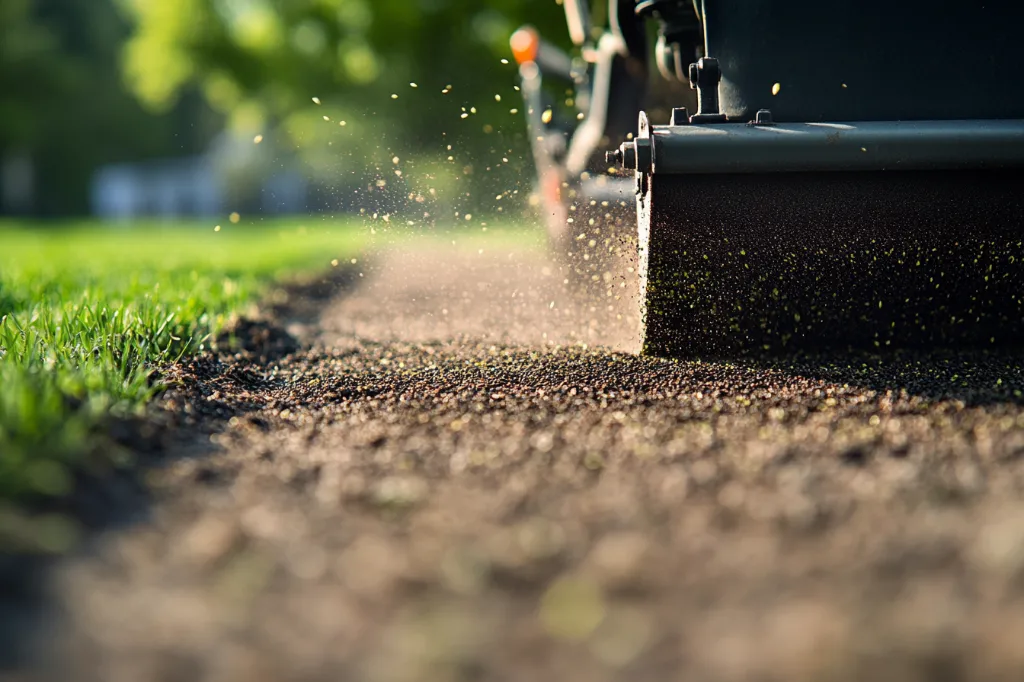A healthy lawn may develop bare patches or thin areas over time. Lawn seeding spring techniques, including seeding and overseeding, are key to repairing your lawn and filling in these gaps. This guide explains why these methods are important, details how to choose the best grass seed, and shows you how to overseed or seed your lawn for a fuller, greener look.
Seeding and overseeding are essential for maintaining a dense lawn.
Whether you’re repairing damaged areas or thickening an existing lawn, these methods help rejuvenate your yard. Proper application of spring lawn seeding techniques leads to improved turf density and overall lawn health.Types of Grass Seed
Different grass types work best in various climates and soil conditions. Here’s a quick look at some common options:
Grass Type | Suitability |
Kentucky Bluegrass | Cool-season grass; ideal for northern climates |
Tall Fescue | Durable; works in both sun and shade |
Bermuda Grass | Warm-season grass; thrives in hot, sunny regions |
Perennial Ryegrass | Quick germination; great for overseeding |
Choose a type that fits your local climate and existing lawn conditions for the best results.
Seed Selection
When selecting seed for repairing lawn issues, consider these tips:
- Climate Compatibility: Choose a seed that suits your region.
- Soil Conditions: Use the results from a soil test to guide your selection.
- Grass Type: Match the seed to your existing grass, or choose a complementary type.
- Quality: Look for high-quality seed with a high germination rate.
These steps help ensure you pick the best grass seed for your needs.

Seeding Techniques
Follow these steps for effective seeding and overseeding:
- Prepare the Area:
Remove debris and loosen the soil with a rake. This creates a good base for the seed. - Spread the Seed:
Use a broadcast spreader to distribute the seed evenly. For overseeding, reduce the seeding rate to blend with existing grass. - Lightly Rake the Seed:
Gently work the seed into the soil. This improves seed-to-soil contact, increasing germination rates. - Cover the Seed:
Add a thin layer of topsoil or compost. This protects the seed and helps retain moisture. - Water Gently:
Lightly water the area immediately after seeding to help settle the seed in place.
These methods detail how to seed the lawn and overseed for even, consistent growth.
Seasonal Timing Considerations
Important Note: Spring seeding can be less effective due to upcoming summer conditions. The hot, dry environment of summer often hampers the ability of young seedlings to mature properly. We recommend the following approach:
- Weed Prevention First:
Prioritize applying weed preventers to clear your lawn of unwanted growth. - Temporary Seeding in May:
In May, you can lightly apply topsoil and seed as a temporary measure. This acts as a “bandaid” to cover bare patches until fall. - Optimal Fall Seeding:
Fall is the most desirable time for planting grass because of cooler temperatures and better moisture retention, which support seed germination and establishment. - Alternative Solution:
If immediate results are required and seeding in spring isn’t yielding the desired outcomes, consider replacing the lawn with sod. This option offers much quicker results and a more consistent appearance.
Post-Seeding Care
Proper care after seeding is crucial for successful germination and growth. Consider the following steps:
- Watering: Keep the soil consistently moist by watering lightly 1-2 times per day until the seed germinates. Then, gradually reduce the frequency while increasing the depth of watering.
- Fertilizing: Apply a starter fertilizer to boost early growth. Follow recommendations based on your soil test.
- Mowing: Wait until the new grass reaches an appropriate height before mowing. Use a sharp mower to avoid damaging the tender shoots.
These care tips support successful overseeding lawn practices and help your new grass establish quickly.

Effective seeding and overseeding are key for repairing lawn issues and maintaining a lush, green yard.
While spring seeding can help as a temporary fix, keep in mind that summer conditions are not ideal for young grass seedlings. For the best long-term results, focus on weed prevention and consider a fall seeding schedule—or opt for sod if you need quicker transformation. For more comprehensive lawn care advice, check out our Spring Lawn Care Steps for a Lush, Green Lawn.



